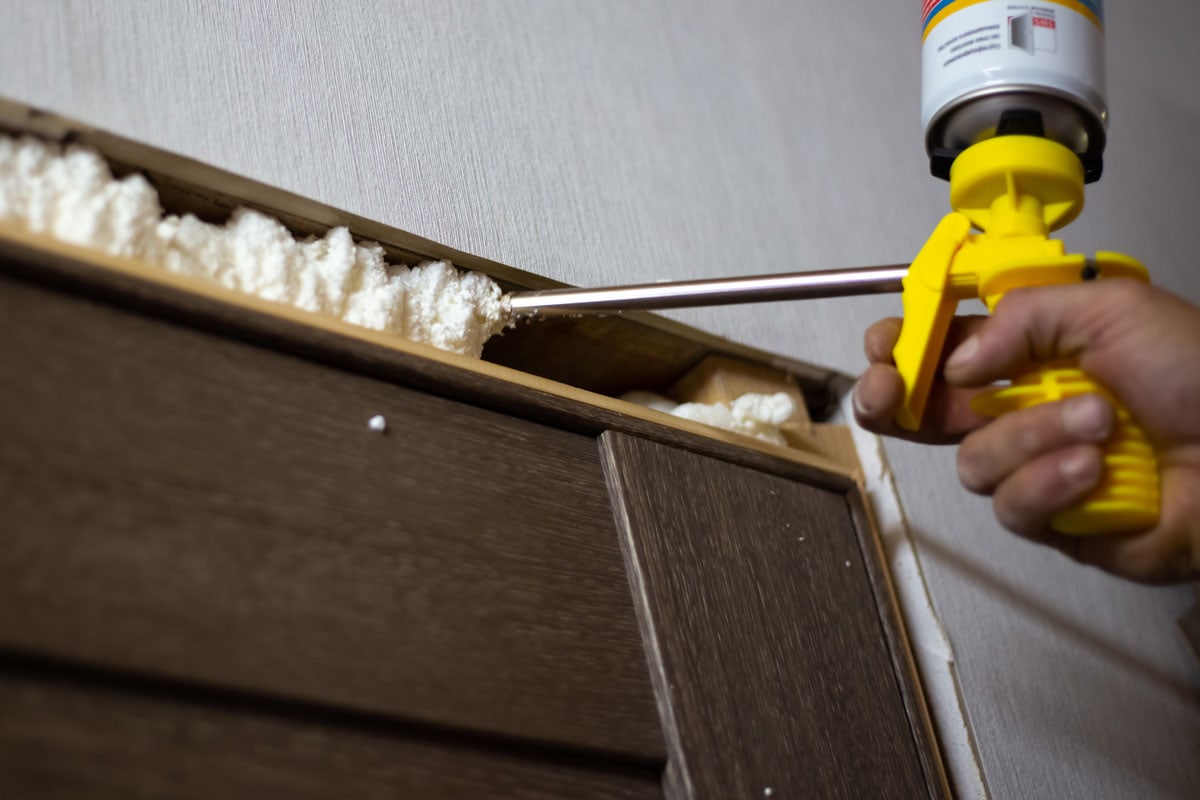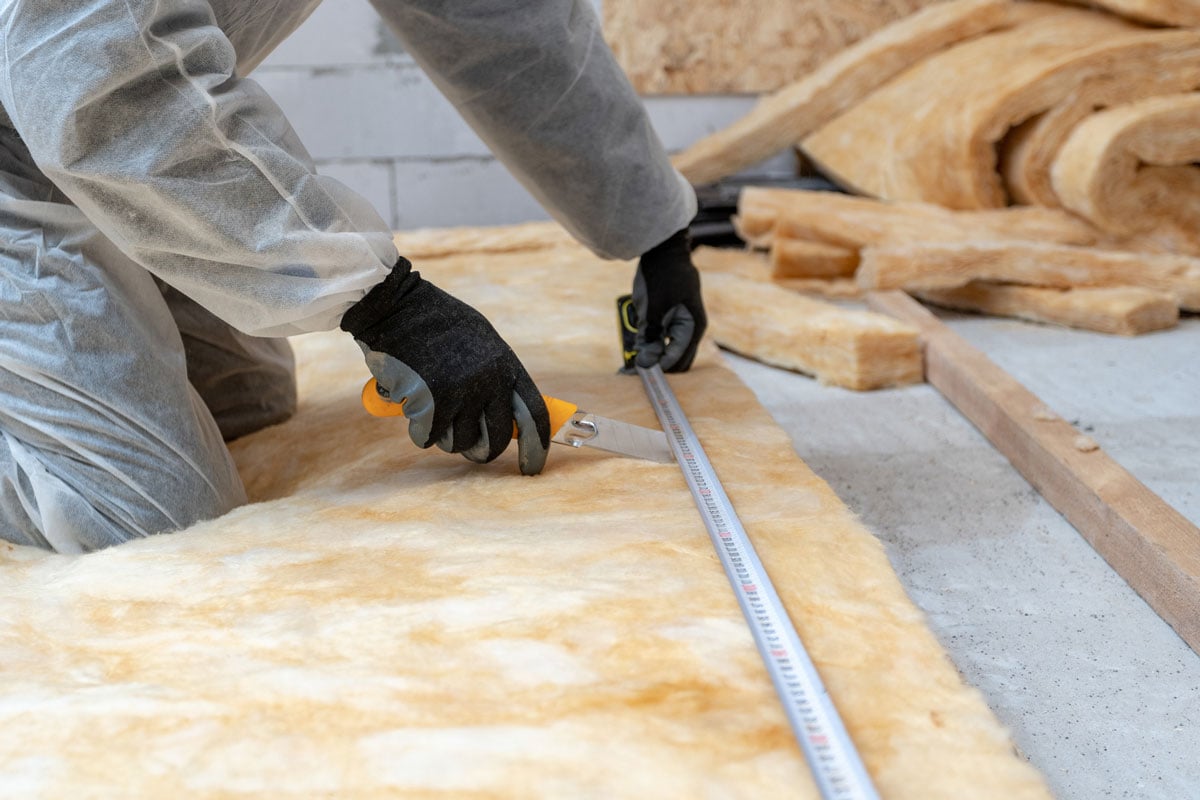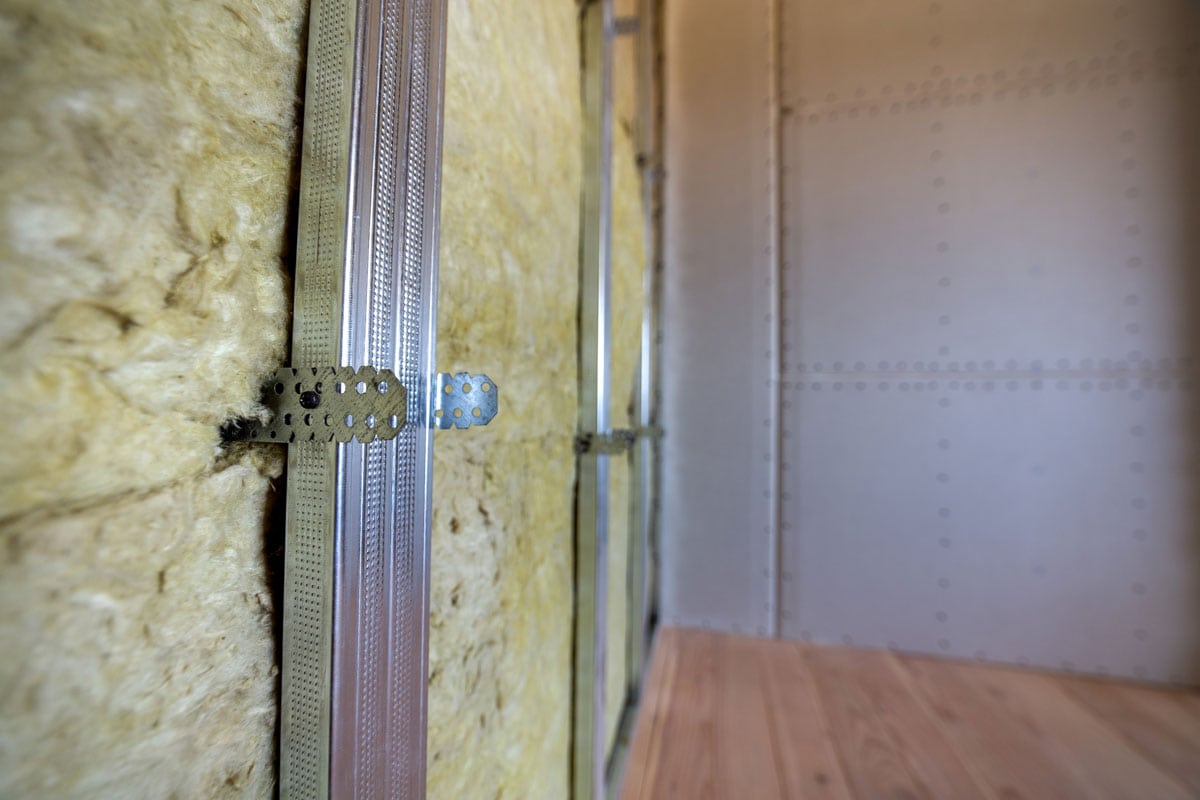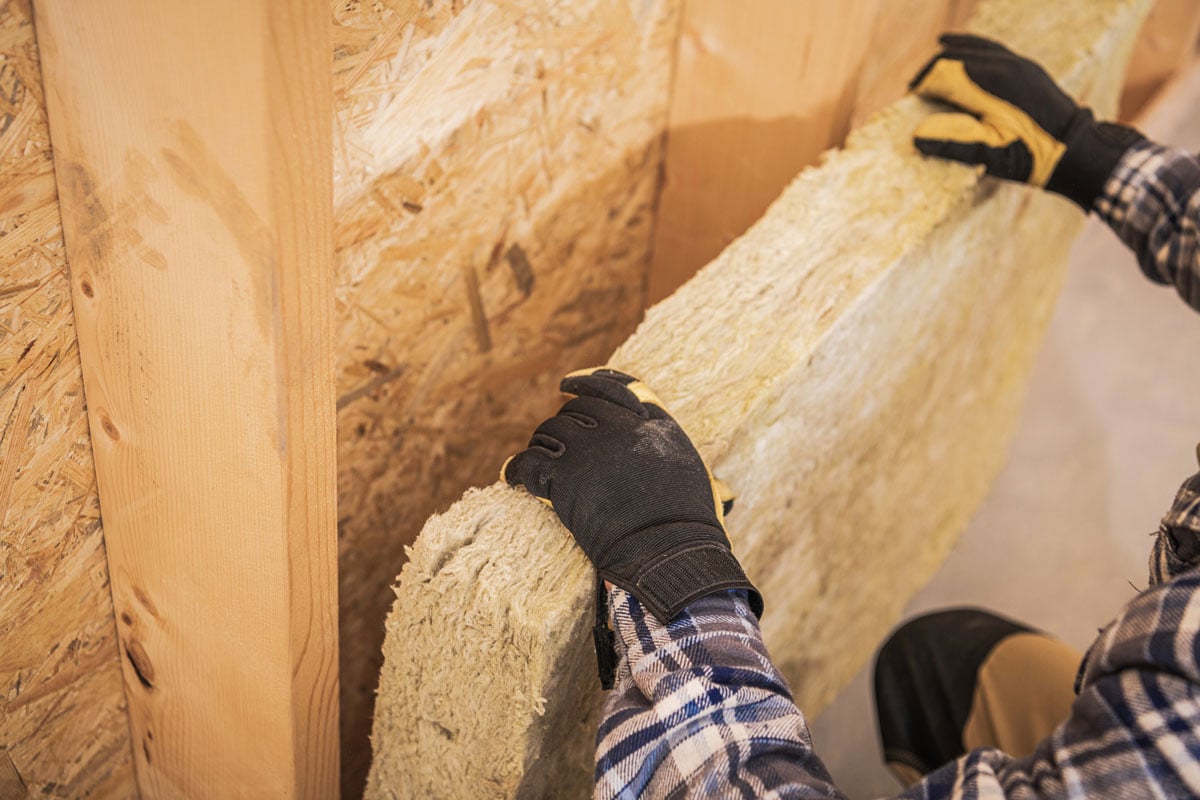Despite your best efforts to keep a warm, comfortable home, you may discover an extremely cold wall in one room. So, what do you do? If you were curious whether you can insulate a cold wall from the interior of your abode, you can. We did the research to give you the steps you seek.
You can certainly add insulation to a cold wall from inside your home. However, you might need some supplies and to follow specific steps to stave off the cold. Check out the following points:
- Figure out whether you will have to open your walls or cover them.
- Choose your insulation.
- Purchase necessary supplies.
- Add insulation to the wall.
- Enjoy a warmer room.
Maybe you want to know about the best insulation for your walls? Or you're curious about maintaining a warm, pleasant indoor temperature. Keep reading as we reveal some helpful information.
![Construction Worker Insulating House Walls with Thermal Material, How To Insulate A Cold Wall From The Inside [Step-By-Step]](https://hvacseer.com/wp-content/uploads/2022/07/1How-To-Insulate-A-Cold-Wall-From-The-Inside-Step-By-Step.png)
Cold Interior Wall - What To Do?
When you have a cold interior wall or two in your home, it can be more than a little unpleasant. An energy-inefficient home leads to higher bills to overcompensate for heat loss. A cold wall might display signs of condensation or develop damage if not properly insulated. So, what to do?
Take action and find ways to insulate your cold wall. You can choose between adding a layer of reflective or fiberglass insulation or pump-in loose cellular or foam insulation between the cavities of walls.
Depending on the layout and condition of the wall, your budget for renovations, and whether you want to DIY or hire a professional will impact the cost. However, it doesn't pay to not remedy the situation. Areas with persistent cold coming through the wall can cause more problems than good.

How To Insulate Cold Walls Explained
If your home has a cold interior wall and you don't mind a little construction, consider opening up your walls. Moreover, this might be a better method to add insulation, especially if the outside of your home is siding or brick.
It is possible to inject an expanding spray foam, loose cellular insulation, or stuff another type of insulation into a hole in the wall. The goal is to fill the cavity where cold air is allowed to gather and permeate the interior wall.

Don't like the idea of putting a hole measuring 1/2 an inch to 2 inches in the wall to add insulation? No worries. Try the following ideas below.
- Add layers of insulation panels, roll batting, or foam insulation board. Fiberglass is a popular choice. However, mineral wool or another form of thermal insulation is ideal.
- You may want to construct a frame of studs to place atop the existing cold wall, which you will fill with insulation and cover with drywall.
- It is also possible to attach insulation directly to the wall without a frame and then cover it. Further in the post, there is a video illustrating this technique.
Step 1. Assess Your Wall
Check the condition of your wall. There might be craps, gaps, or holes that need patching or caulking where cold air is leaking. Take measurements of the wall with a measuring tape to figure out how much insulation you need, depending on the type you want to use.
Step 2. Gather Work Materials
If you want to use a batt-type of fiberglass insulation versus a board, you'll need to have a respirator, eye goggles, and wear gloves. Any exposure or inhalation of fine particulates of fiberglass can be harmful and irritating to your eyes, ears, and skin. You may also want to grab a work knife, measuring tape, and a chisel.
Check out this respirator on Amazon.
Step 3. Measure and Build Wood Frame
If you don't want to use a frame method, skip this step. If you do, read on.
Take the height and width of the wall to which you want to add insulation and mark it down. You'll want a gap of 15 inches between each wooden stud. Also, you'll need a top plate and bottom plate to run along the top and bottom of the wall. Note the plates will be the same thickness as a stud.
Once you determine the measurements needed to fit the interior wall, build your frame and attach it securely. Prepare to add insulation and put on protective gear.
Check out this helpful video for tips on building a stud frame.
Step 4. Add Insulation
Start at one side of the wall from the bottom, taking your batting insulation and packing it in. Cut off any excess and use your chisel for a solid fill-in. Work across the bottom of the frame until it is filled with a layer of insulation.
Review your work and gradually move up a little higher to add insulation. Eventually, you will reach the top of the wall toward the ceiling, where you need to fill in insulation.
Check out this insulation for walls on Amazon.
Step 5. Add A Cover
Once the insulation has filled the frame entirely with little to no gaps, add a new layer of drywall. Caulk or patch any gaps so no drafts can get through. Add a coat of paint or wallpaper over the drywall.
How Do I Insulate My Walls Without Removing Drywall?
Don't like the idea of having to remove existing drywall to insulate your walls? Not to worry. One easy solution is to make a small hole in the drywall to access the cavity. Pump in spray foam insulation or add a loose blow-in type of insulation. Afterward, you can patch up the hole and paint over it.

What Is The Best Insulation For A Cold Room?
One of the most popular types of insulation is fiberglass batting in a roll form. However, foam board insulation is a better candidate. Fiberglass has particulates that can irritate and harm the skin, eyes, nose, and throat on contact. In comparison, foam board is rigid, has a high R-value, and is less troublesome to install.
How Do You Make A Wall Warmer?
To make a wall warmer, you need to add a layer of insulation. In a pinch, you can hang clothes, towels, or a thick blanket over the wall.
However, examine your wall and caulk any gaps where cold air is coming through. You will need to add substantial insulation to cover the wall, increase the R-value, and raise the temperature of the surface and surrounding room. Try adding foam board or roll batting insulation to the wall.
Check out this foam insulation on Amazon.
Check out this video if you aren't up to installing insulation and placing an additional wall over it to improve your cold room. They show a fast way to make a cold room warmer and hide insulation from view.
How Do I Keep My Walls Warm In The Winter?
Before winter sets in, it's imperative to check your walls for any cracks, damage from pests, moisture, leaks, or other problems. Repair or add a new drywall panel if needed, or fix existing holes and other damage with a patch.
If you feel it is necessary to open up a wall or reinstall new insulation, do so. Adding a layer of insulation keeps walls warmer, and adding protective coatings to keep out the cold. Also, don't neglect to winterize nearby windows that could freeze walls and rooms.
Why Is A Cold House Unhealthy?

Building tolerance to the cold isn't always an option, as it's essential to keep a home warm and comfortable when temperatures plunge in winter. Living in a cold house can prove harmful to your health.
Evidence suggests that exposure to cold air exacerbates respiratory ailments, affects the cardiovascular system, causes mental health problems, and can stunt growth in developing children.
What Is The Healthiest Temperature To Keep A House?
The human body is sensitive to changes in temperature. And when a room or house is chilly, it can negatively impact one's health and mood. So, experts suggest that the ideal, healthy indoor temperature for a home should be between 68 and 72 degrees Fahrenheit.
Check out this thermostat on Amazon.
Final Takeaway

There's no need to suffer in a chilly room or house. Instead, take matters into your own hands and add insulation to your walls from the inside. Maintaining a proper level of insulation improves your home's energy efficiency and level of comfort.
Did you enjoy learning something from this post? If so, be sure to read the following, too.
Can You Do Foam Insulation Yourself? [And How To]




